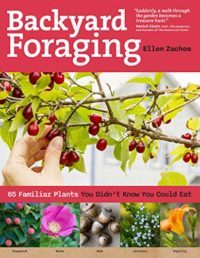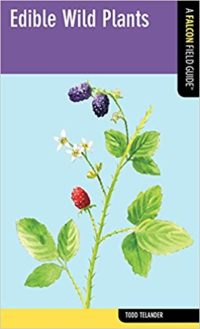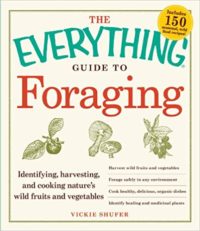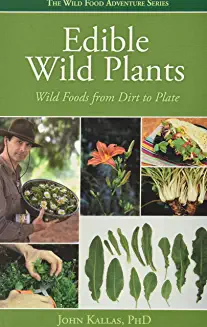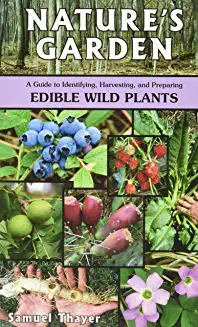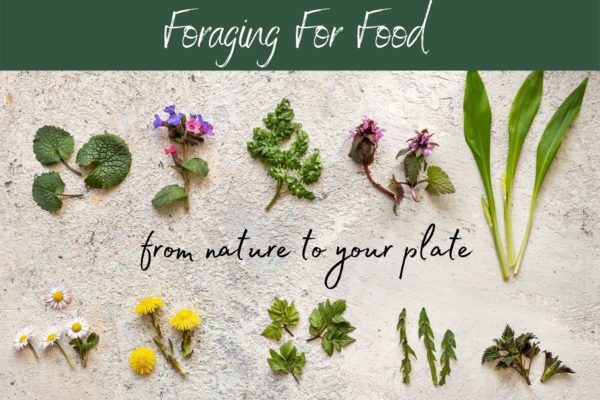
Now that the Earth is fully in bloom and the world is green again, have you ever wondered what you could eat? I remember as a child being dared to try eating leaves and grass, and I must say I didn’t find them too appetizing. However, knowing which plants to eat and how to prepare them might have made that a better experience. Why not try your hand at preparing some of the plants in your own backyard this summer? Below are a couple of plants and weeds that you may have in your backyard. Before collecting any of these plants, make sure you gather them from an area that does not have pollutants such as herbicides, road run-off, or animal waste. Collecting from your own backyard is a safe bet! Before diving into the recipes, think about checking out one of these books to help you identify your plants.
Books
Backyard foraging: 65 familiar plants you didn’t know you could eat by Ellen Zachos.
Trying to eat locally? Discover food in the plant life all around you. Learn to eat your way around the block! Your backyard or a nearby park or vacant lot might be rich with edible possibilities.
Edible wild plants: a falcon field guide by Todd Telander
Edible Wild Plants is a field guide to the 90 most common and sought-after species in North America. Conveniently sized to fit in your pocket and featuring full-color, detailed illustrations, this informative guide makes it easy to identify plants in your backyard, favorite parks, and wildlife areas
The everything guide to foraging: identifying, harvesting, and cooking nature’s wild fruits and vegetables by Vickie Shufer
From the field to your table– how to find and prepare wild foods. This is your one-stop reference for identifying and harvesting the wild fruits and vegetables that grow in fields, forests, and even on your own lawn.
Edible wild plants: wild foods from dirt to plate by John Kallas
Maps, explanations, photographs, and detailed descriptions offer a comprehensive overview of edible wild plants, how to identify them, and how to prepare them.
Nature’s garden: a guide to identifying, harvesting, and preparing edible wild plants by Samuel Thayer
We are surrounded by free groceries that we have never tasted and do not recognize. Learn to identify these fruits, nuts, grains, and vegetables, as well as how to find them and prepare them
Recipes to Try
Here are some fun recipes using easily identified plants to get you started!
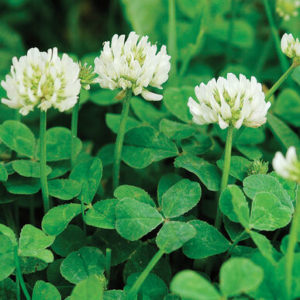

I used to love using these as a child to make daisy chains, but you can also make tea and cookies with them!
This recipe is brought to you by Colleen.
Ingredients:
- 1 cup of fresh White Clover Flowers (or ½ cup dried)
- 4 cups water
- Honey or maple syrup (optional)
Instructions:
- Put the clover blossoms into a quart jar. Boil the water, then pour over the blossoms.
- Let steep for at least 30 minutes or up to 4 hours, then strain out the clover blossoms with a fine-mesh sieve and refrigerate.
- Serve cold over ice with honey or maple syrup and lemon if desired.
Strawberry White Clover Cookies
This recipe is brought to you by Kathie Lapcevic.
Ingredients:
- 1 cup Butter, softened
- ¾ cup Brown Sugar, packed
- 2 Eggs
- 2 tablespoons Milk
- 3 cups All-Purpose Flour
- 1 teaspoon Baking Soda
- ½ cup Fresh White Clover Blossoms, packed & chopped (3/8 ounce)
- 1 cup Strawberries, diced (5 ounces)
Instructions:
- Preheat the oven to 350 degrees.
- Line cookie sheets with parchment paper or silicone baking mats.
- Sift together the flour and baking soda. Set aside.
- Cream together the butter and brown sugar until light and fluffy. Add the eggs and beat well. Stir in the milk.
- Beat the dry ingredients into the butter mixture until well combined. Fold in the white clover blossoms and strawberries and mix until combined.
- Drop dough by Tablespoons full onto prepared baking sheets.
- Bake in a preheated oven for 13-15 minutes. Edges will be golden brown.
- Cool on wire cooling racks.
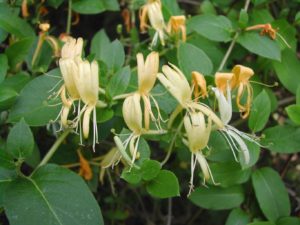
For me, this is the scent that announces the arrival of summer. I used to think all you could do with honeysuckles was suck the nectar, but with these recipes, you can make a syrup and a tea!
Note: Make sure to consult an identification guide before picking your honeysuckles, as there are some varieties that are toxic.
Honeysuckle Tea
This recipe is brought to you by the view from great island.
Ingredients:
- 2 cups honeysuckle blossoms
- 2 ½ cups water
Instructions:
- Pluck the blossoms from the honeysuckle vine. Discard any leaves or green parts. Try to take the freshly opened flowers and even the buds that are about to open. Put them in a pitcher or mason jar.
- Cover with about 2 1/2 cups of water that has been heated to just boiling. Give it a good stir and let it steep at room temperature for several hours. Then refrigerate overnight.
- Strain the tea through a fine-mesh strainer, cheesecloth, or a coffee filter. The coffee filter will yield a crystal clear tea.
- Serve cold over ice with a mint sprig and a few blossoms for garnish.
Honeysuckle Ice Cream
This recipe is brought to you by the view from great island.
You will need an ice cream machine for this recipe.
Ingredients:
- 1 1/2 cups heavy cream
- 1 cup whole milk
- 1/2 cup sugar
- 2 cups of honeysuckle blossoms, more or less.
- Seeds from 1 vanilla bean
Instructions:
- Gently rinse the blossoms in cold water. Drain on a clean kitchen towel.
- Put the cream, milk, and sugar into a medium saucepan and stir to dissolve the sugar.
- Add the honeysuckle blossoms into the pan and bring the mixture to a simmer over medium heat, stirring occasionally.
- Turn off the heat and let the mixture come to room temperature. Then cover and refrigerate overnight.
- In the morning, strain the blossoms out and add the vanilla bean seeds. Mix well to break apart any clumped seeds.
- Process the cold mixture in your ice cream machine according to its directions.
- Put the soft ice cream in the freezer to firm up before serving.
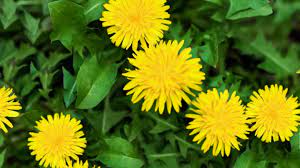
The yellow flowers that seem to be everywhere come summer are edible! If you like these recipes, their numbers may soon be dwindling.
Sauteed Dandelion Greens with Eggs
Try this all-natural dish for breakfast! This recipe is brought to you by Laura Davidson.
Note: This recipe uses only the green stems and leaves, not the actual blossom.
Ingredients:
- 4 cups chopped dandelion greens (about 1 to 2 bunches) thick stems removed and discarded
- 2 tablespoons (30 g) unsalted butter, clarified butter, or ghee
- 1 large leek, white and light green parts only sliced lengthwise and finely chopped
- 4 large eggs
- ¼ cup crumbled feta cheese
Instructions:
- *Blanch the Dandelion Greens: Bring a large pot of salted water to a boil. Add the chopped dandelion greens and blanch for 1 to 2 minutes. Drain the greens thoroughly, using a wooden spoon to drain and press out as much liquid as possible.
- Melt the butter or ghee in a 10-inch sauté or cast iron pan set over medium heat. Sauté the leeks until tender, about 5 minutes, stirring occasionally. Add the drained dandelion greens one handful at a time. Cook each handful until wilted, then add more.
- When the greens are wilted, use a spoon to create several shallow nests in the greens and crack the eggs into each one. Top with feta cheese and cook uncovered until the whites of the eggs are set about 5 minutes. Serve immediately with toasted slices of crusty bread, if desired.
Blanching is a cooking process in which food is scalded in boiling water, removed after a brief timed interval, and finally plunged into iced water or placed under cold running water to halt the cooking process.

